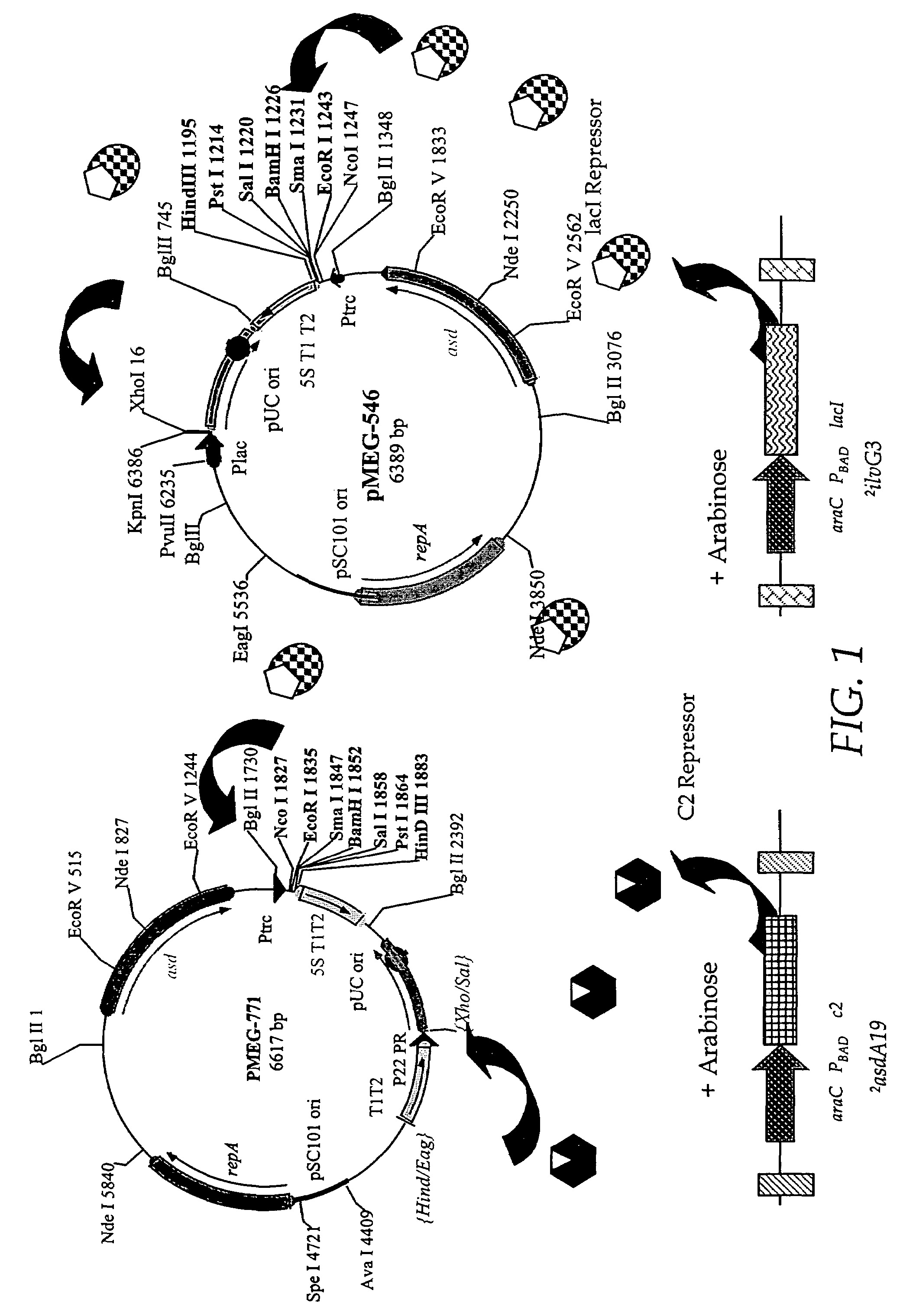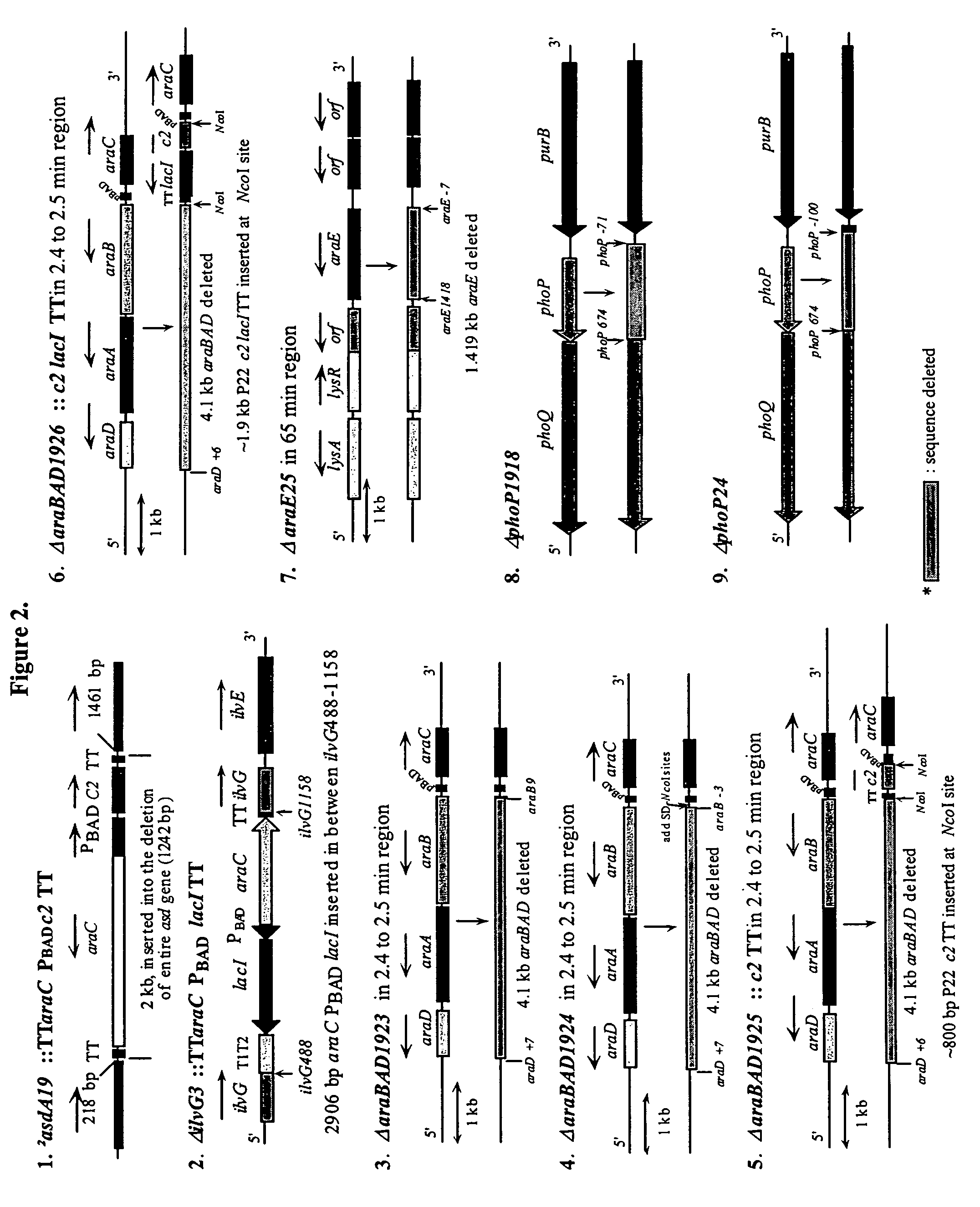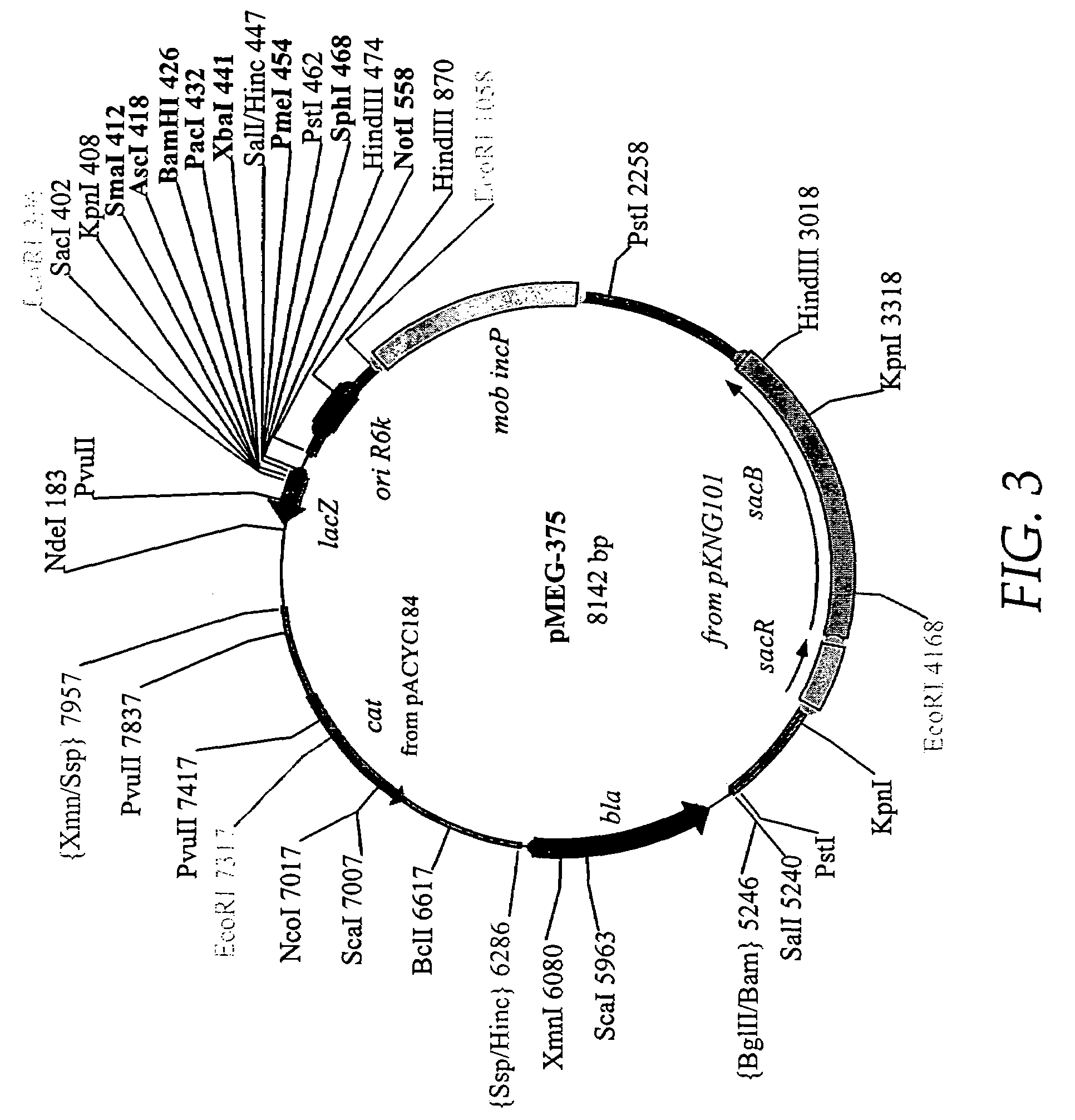Regulated antigen delivery system (RADS)
a delivery system and antigen technology, applied in the field of genetically engineered attenuated pathogenic microorganisms, can solve the problems of high impairment of rads microorganisms and inability to generally survive for extended periods, and achieve the effects of effective exposure, increased antigen production, and high plasmid replication activity
- Summary
- Abstract
- Description
- Claims
- Application Information
AI Technical Summary
Benefits of technology
Problems solved by technology
Method used
Image
Examples
example 1
Construction of Bacterial Host Strains as Attenuated Antigen Delivery Hosts for RAVs.
[0208]The RADSs are dependent upon the presence of RAV constructions as described in Example 2 and the presence of chromosomal deletion mutations, often with insertions, to permit regulation of genes on the RAVs under permissive versus non-permissive conditions. Deletion / insertion mutations 1 and 2 in FIG. 2 are generally needed for the maintenance of most RAVs described although the deletion / insertion mutation 2 is sufficient for maintenance and function of one of the RAVs described in a subsequent example. The introduction of mutations such as ΔsmdA19::TTaraCPBADc2TT and ΔilvG3::TTaraCPBADlacITT is best accomplished by the use of suicide vectors. As stated above, the araCPBAD regulatory system enables arabinose supplied as a free sugar to bind to the AraC protein which acts as an activator of transcription commencing at the PBAD promoter thus causing synthesis, after translation of the c2 and / or l...
example 2
Construction of RAVs for Use in RADS.
[0214]The RAV pMEG-771 (FIG. 10) is obtained by removing the EagI-XhoI fragment of pMEG-546 (FIG. 10) containing the lac promoter and replacing it with P22 PR from pMEG-104 FIG. 10 and FIG. 4 of U.S. patent application Ser. No. 08 / 761,769). pMEG-546 is digested with EagI and treated with T4 DNA polymerase to blunt the end, then digested with XhoI. This removes Ptac. PMEG-104 is then digested with HindIII then blunt ended with T4 DNA polymerase and digested with SalI. This fragment of pMEG-104 contains the 5S T1 T2 transcription terminator and the P22 PR, which is blunt end ligated into the cut pMEG-546 to yield pMEG-771 (FIG. 10). pMEG-771 can be used with host strains containing mutations 1 and 2 (FIG. 2) plus other mutations such as 3 or 5 or 6, optionally with mutations as described in Example 1, to provide arabinose regulated runaway expression. Another RAV, pMEG-546, as depicted in FIG. 1, has all the regulatory signals repressible by the la...
example 3
Construction and Evaluation of RADSs to Prevent Erysipelothrix rhusiopathiae Infection and Disease.
[0217]Erysipelothrix rhusiopathiae is a gram-positive pathogen of swine and turkeys that causes the disease erysipelas and in later life can cause arthritis (Wood, R. L. (1984) J. Am. Vet. Med. Assoc. 184:944-949). Previous work has identified a 65 kDa surface antigen termed Ery65 or SpaA.1 (Shimoji, Y. et al. 1999 Infect. Immun. 67:1646-1651) that can be injected into animals with adjuvant to confer protective immunity to E. rhusiopathiae challenge. There also exists a monoclonal antibody (Mab) to the Ery65 protein which can confer passive protection to animals infused with the Mab against challenge with viable E. rhusiopathiae (Henderson, L. et al. 1997. U.S. Pat. No. 5,625,038).
[0218]The expression of the full length ery65 gene in E. coli and S. typhimurium tends to be quite toxic, possibly because of the signal sequence that doesn't function as well in gram-negative bacteria as it ...
PUM
| Property | Measurement | Unit |
|---|---|---|
| body temperature | aaaaa | aaaaa |
| body temperature | aaaaa | aaaaa |
| body temperature | aaaaa | aaaaa |
Abstract
Description
Claims
Application Information
 Login to View More
Login to View More - R&D
- Intellectual Property
- Life Sciences
- Materials
- Tech Scout
- Unparalleled Data Quality
- Higher Quality Content
- 60% Fewer Hallucinations
Browse by: Latest US Patents, China's latest patents, Technical Efficacy Thesaurus, Application Domain, Technology Topic, Popular Technical Reports.
© 2025 PatSnap. All rights reserved.Legal|Privacy policy|Modern Slavery Act Transparency Statement|Sitemap|About US| Contact US: help@patsnap.com



